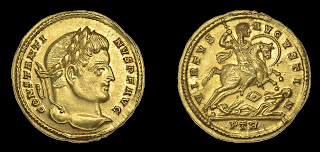Shifting a culture from paganism to Christianity was not a one-step, black-and-white process. The Christianization of Europe involved wars and mass baptisms, surely, but followed by natural (and slow) evolution away from older habits.
The clash of Christianity with paganism is seen as early as the 1st century: in Acts 19 in the New Testament, silversmiths in Ephesus who crafted images of Artemis rioted against Paul's proselytizing, because his success meant the loss of their livelihood.
The persecution of Christians in early Rome was not unique to Christians. Roman officials in 186CE persecuted followers of Dionysius and the practice of Bacchanalia, which took place at night. Gatherings taking place "under cover of darkness" were suspicious, because that is how anyone plotting against the emperor would act. Bacchic groups were disbanded and their leaders arrested. Other groups who were deemed suspicious by Roman imperial authorities and outlawed were druids, Jews, astrologers, the cult of Isis, some philosophers, as well as Christians.
Christians, originally seen as a sect of Judaism, was by the 2nd century seen as its own group, but just one of the many religious groups that Rome needed to keep an eye on. As early as 64, however, with the fire that destroyed much of Rome during Nero's reign, Nero chose to blame the Christians, whom Suetonius (writing later) described as men following a "new superstition."
Although mocked and abused in the Roman Empire, Christian persecution was not a state practice until Decius (emperor from 249-251). Decius decreed public sacrifices with mandatory participation; those who refused were arrested, imprisoned, tortured, and sometimes executed. Emperors Diocletian (284-305) and Galerius (305-311) continued the persecutions, until Galerius relented with the Edict of Milan, promoting tolerance. Constantine who followed Galerius legalized Christianity in 313.
Constantine did not, however, "turn the Roman Empire Christian." Paganism was still practiced and tolerated...for a time. We will continue this discussion tomorrow.













